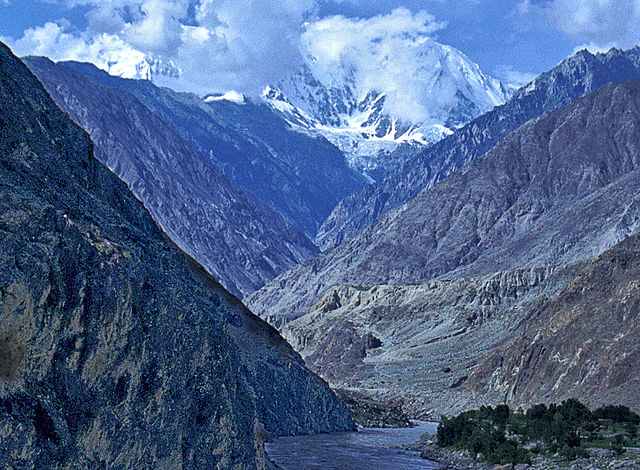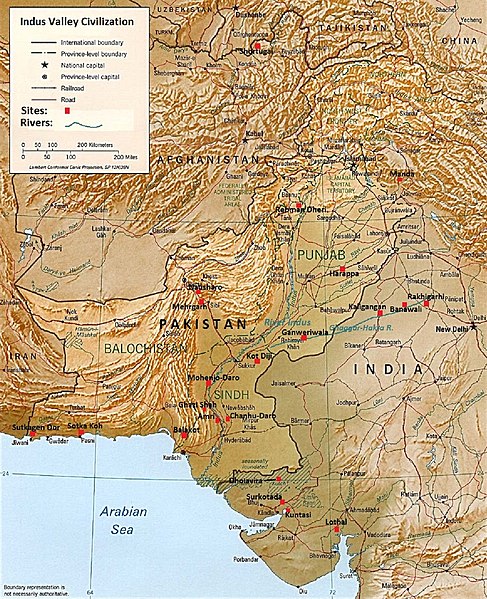The Indus is a transboundary river of Asia and a trans-Himalayan river of South and Central Asia. The 3,120 km (1,940 mi) river rises in mountain springs northeast of Mount Kailash in Western Tibet, flows northwest through the disputed region of Kashmir, bends sharply to the left after the Nanga Parbat massif, and flows south-by-southwest through Pakistan, before emptying into the Arabian Sea near the port city of Karachi.
The Indus Gorge is formed as the Indus River bends around the Nanga Parbat massif, shown towering behind, defining the western anchor of the Himalayan mountain range.
The course and major tributaries of the Indus river
The course of the Indus in the heavily disputed Kashmir region; the river flows through Ladakh and Gilgit-Baltistan, administered respectively by India and Pakistan
The major sites of the Indus Valley Civilization c. 2600–1900 BC in Pakistan, India and Afghanistan
The Himalayas, or Himalaya is a mountain range in Asia, separating the plains of the Indian subcontinent from the Tibetan Plateau. The range has some of the Earth's highest peaks, including the highest, Mount Everest. More than 100 peaks exceeding elevations of 7,200 m (23,600 ft) above sea level lie in the Himalayas.
Mount Everest and surrounding peaks as seen from the north-northwest over the Tibetan Plateau. Four eight-thousanders can be seen, Makalu (8,462 m), Everest (8,848 m), Cho Oyu (8,201 m), and Lhotse (8,516 m).
The Annapurna range of the Himalayas
Aerial view of the Himalayas
Marsyangdi valley with Annapurna II








